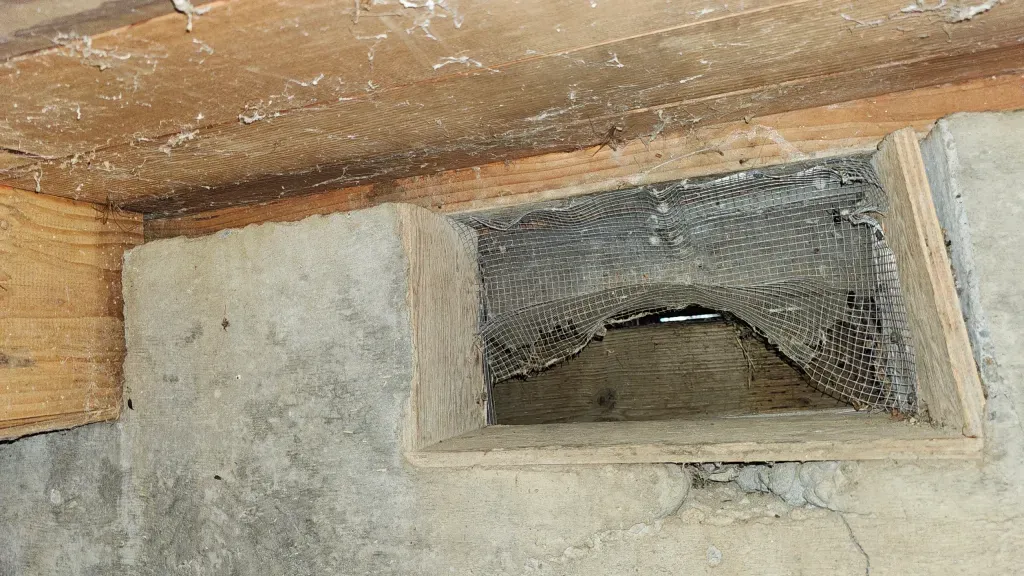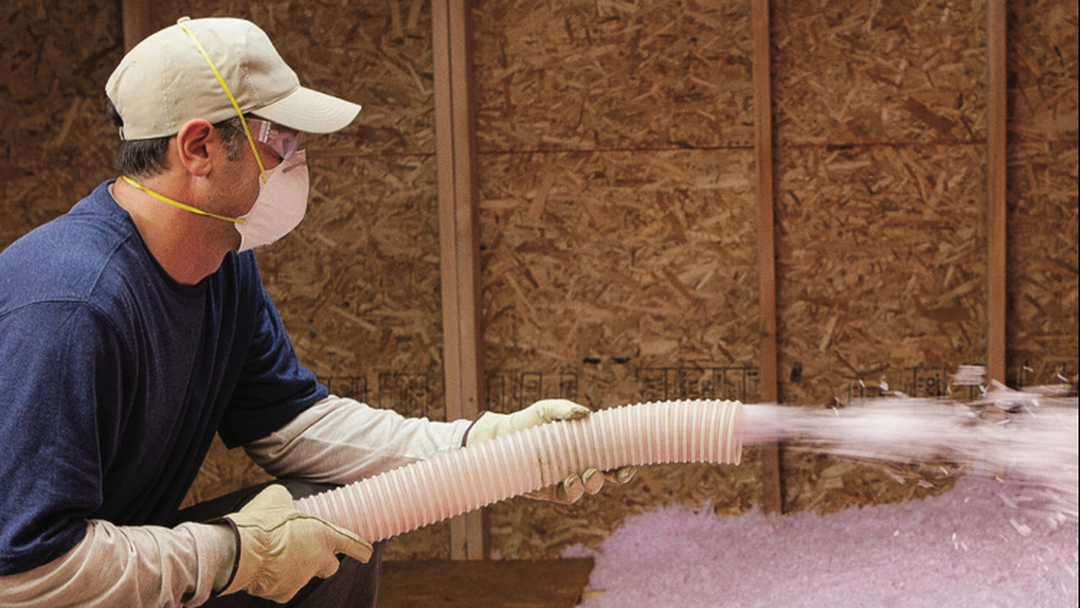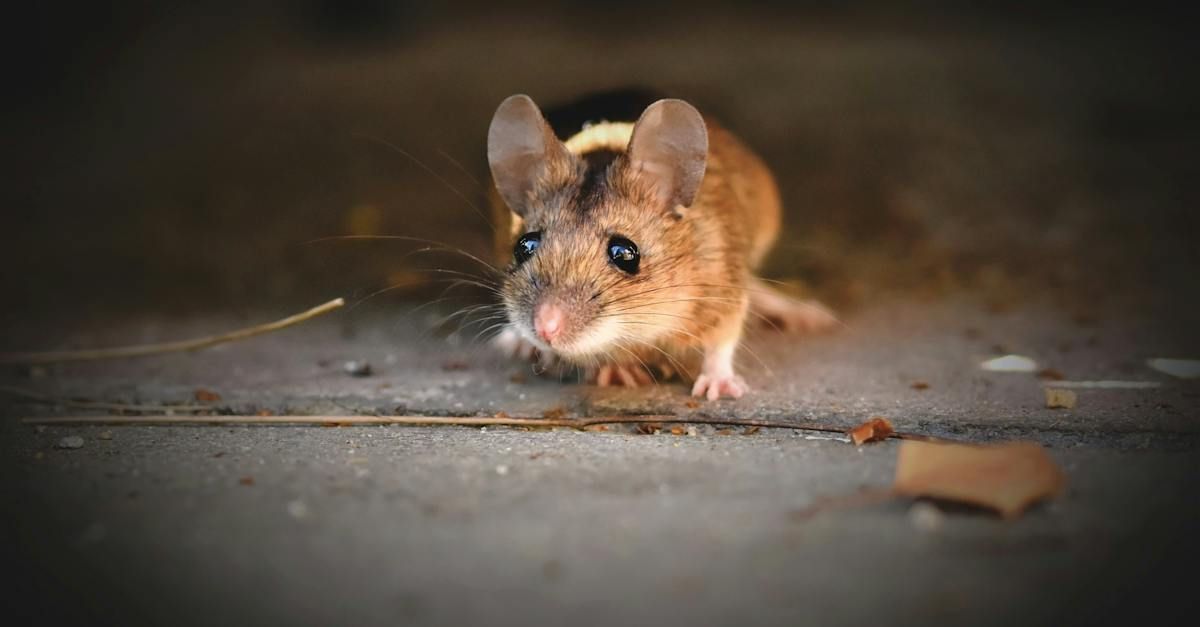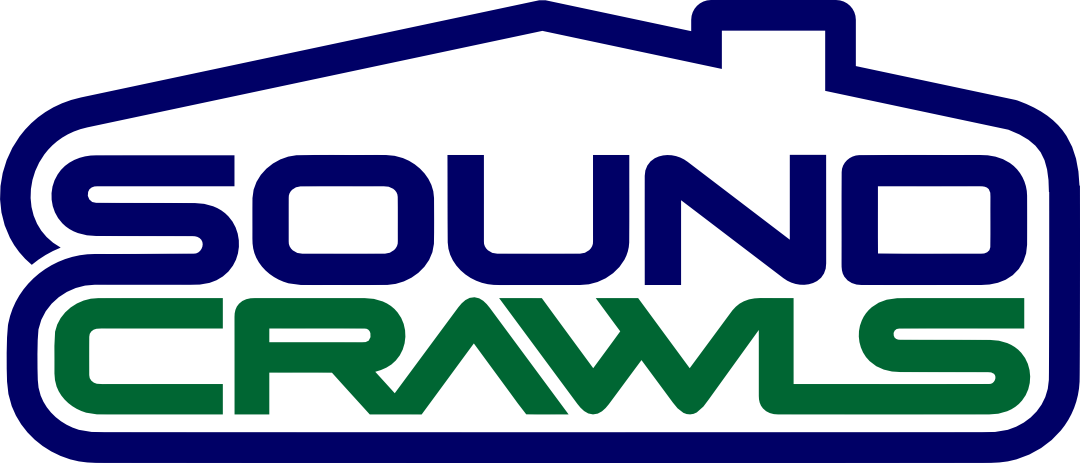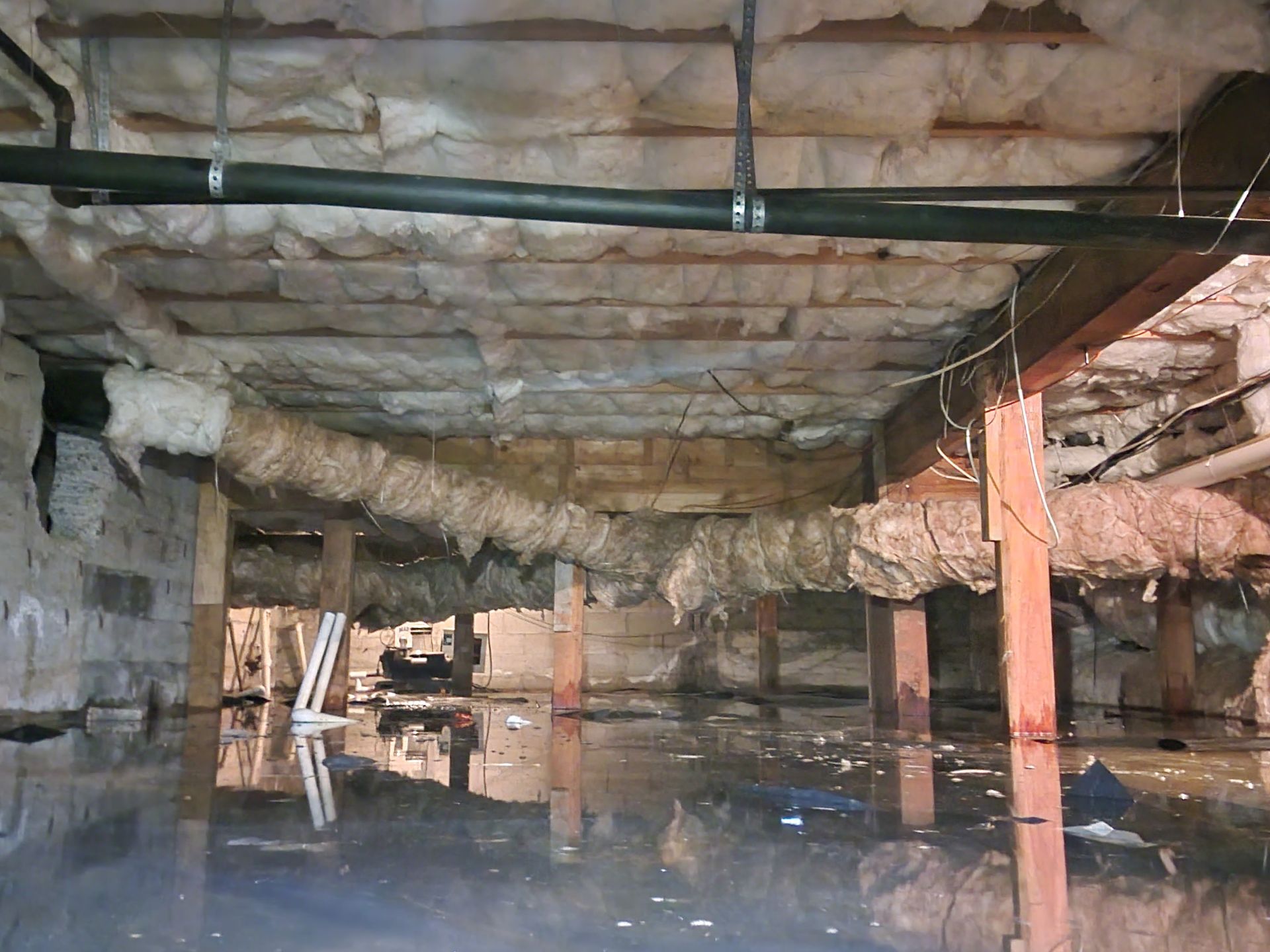Step-By-Step What To Do After Finding Mold in Your Home or Attic
Immediate Steps To Take After Uncovering Mold
When you think of home, you imagine cozy living rooms, warm kitchens, and tranquil bedrooms. But what about the attic? Often overlooked, attics can harbor hidden dangers like mold growth, posing serious risks to your home and health in the Pacific Northwest. Mold in the Pacific Northwest, including Washington state, is common due to high humidity and frequent rain. Finding mold in your home and attic can feel like a nightmare, but it’s important to remain calm and tackle the issue step by step.
Mold in the attic, much like the example in the image we encountered, is not just an aesthetic issue—it’s a clarion call for immediate attention. This fungal intruder thrives in the damp, less-ventilated confines of an attic, often going unnoticed until it becomes a significant problem. The repercussions of mold extend far beyond the attic space, potentially impacting the very air we breathe and, consequently, our health.
Mold can be a hidden menace, but if you take the right steps after discovering mold, it’s entirely manageable within reason. Remember, if in doubt, always
consult with professionals to ensure that mold removal is thorough and safe.
If you’re in the position of suspecting mold, don’t hesitate—get a mold specialist in for a free inspection as soon as possible, and then call your insurance company to see where you stand. The sooner you act, the less likely the damage will spread, saving you both time and money in the long run.
Here’s a step-by-step on how to approach actionable steps after uncovering mold in your home:
1. Assess Extent of the Mold Problem
Before you panic, inspect the affected area to gauge how widespread the mold is. Is it just a small patch in the bathroom, or has it spread to the crawlspace or attic? Small areas (under 10 square feet) are often manageable with DIY methods, but larger infestations should involve professional help.
Mold thrives on moisture, so if there’s a leak or high humidity, fix it immediately. This might mean repairing plumbing leaks, fixing a damaged roof, or installing a dehumidifier in the basement. Isolate the area: If the mold is in one room, close it off to prevent spores from spreading through the air. Using plastic sheeting to isolate the area if necessary.
Just a note, from personal experience, if the cause of mold is plumbing related issue, know that the plumbers will not come out until the mold is remediated. It is for the personal health and safety of any reputable plumber to not work near mold since they are not experts and they do not have PPE (personal protective equipment meant for mold). Contact the mold remediation experts first.
2. Types of Mold - How Dangerous Are They?
Not all mold is created equal, the type of mold you’re dealing with can significantly affect how you respond to the issue, both in terms of health risks and the removal process.
The most common types of mold found in homes are Cladosporium, Penicillium, and Aspergillus. These
are usually less dangerous than Stachybotrys (often called “black mold”).
Cladosporium is often found in damp areas like bathrooms, basements, and attics. It has a dark green or black appearance but is not the same as Stachybotrys. Cladosporium can trigger allergic reactions like asthma and allergies but it's generally not toxic. The same goes for penicillium - it grows on organic material like wood, fabric, or insulation, it's common in areas of water damage.
Then there’s Aspergillus, a highly adaptable mold that can thrive in various environments, including attics where ventilation is poor and moisture is trapped. Aspergillus can sometimes release mycotoxins, which are toxic chemicals. It's best to avoid long-term exposure to Aspergillus as it could lead to long term health side effects.
Mold can cause more serious health issues, especially for sensitive groups such as infants, the elderly, or those with asthma or respiratory conditions. In regions with a damp climate, like Washington state's high humidity levels, mold is more likely to thrive here. The consistent moisture in the air creates an ideal breeding ground for mold spores to settle and grow, which is why attics in these areas can be particularly vulnerable to infestation.
3. Identify the Cause of Mold
Mold growth in your home rarely happens without a reason. More often than not, it's a symptom of a bigger issue—moisture.
As experts in crawl space repair, drainage, vapor barriers, and insulation, we often see firsthand how unchecked moisture problems lead to mold infestations. Whether it's from a leaky roof, poor ventilation, or inadequate insulation, moisture creates the perfect environment for mold to thrive, especially in confined, damp areas like attics and crawl spaces.
- Leaky roofs
- Poor ventilation
- Inadequate insulation
In many cases, the mold you find in your attic, basement, or crawl space is a direct result of issues with your crawl space or the foundation of your home. Crawl spaces are often neglected, but they’re critical to maintaining your home's structural integrity and air quality. When water seeps into this area or when the insulation is poorly installed or missing, moisture levels rise. Without proper drainage systems, vapor barriers, or insulation in place, crawl spaces become breeding grounds for mold that can easily spread to other parts of your home.
Addressing the moisture source is crucial to preventing future mold growth, don't wait on that,
contact us before it gets worse. Do it right once the first time, and you won't be bothered by it again.
4. Who To Call First After Finding Mold
This is a tricky decision, and your head is already spinning at the discovery of mold. Finding mold in your home can be overwhelming, and it's easy to feel lost in the chaos of figuring out what to do next. My spouse and I have been homeowners for over a decade, and in that time, we’ve discovered mold twice. Let me tell you, finding mold will always ruin your day. When we first encountered mold, I remember the sinking feeling of uncertainty—where do we even begin? Who do we call?
The answer is it's generally recommended to call a mold specialist first to get a
free inspection and assessment. Lots of local mold remediation companies come by for a free inspection and will give you a free price quote within 1-2 business days. It’s tempting to rush into DIY solutions, but having a professional inspection is crucial, as it ensures you know exactly what you're dealing with and what’s necessary to address it.
5. Should You Call Your Homeowner's Insurance Company First?
Here’s the part that most people, including us, find confusing: Does homeowner's insurance cover mold? In our experience—and this might be the case for most homeowners—the answer is usually no. Insurance companies tend to exclude gradual damage such as mold that forms over time due to slow leaks, humidity, or poor ventilation. Mold is considered the cause of the homeowner's disregard for their property -- even in cases where mold was fully hidden for a long time. In their eyes, why should they pay for your neglect of the home? Yes...it's not a popular stance but that's just how insurance companies are.
In our case, we discovered mold in two different areas of our house, and unfortunately, neither instance was covered by insurance. Why? Because the source of the mold was a slow leak in the roof that had probably been seeping water into our attic for over 20 years—likely from something as small as a nail puncture. It sounds crazy, but that tiny leak had gone unnoticed for decades. By the time we found the mold, it had already spread across a small room, and the remediation process cost us a staggering $3,000 out-of-pocket. Our insurance company was clear: since the mold was due to long-term seepage, it wasn’t covered.
So, why is it so hard for insurance to cover mold? Water damage caused by slow leaks, condensation, or high humidity levels isn’t typically covered by homeowner’s insurance policies because these issues develop gradually over time, making them hard to classify as a sudden "accident" or "event." Insurance companies are more likely to cover damages that occur from sudden, unexpected events—like a burst pipe, storm damage, or flooding from a washing machine malfunction. Mold that’s the result of long-term exposure to moisture usually doesn’t qualify. Mold remediation is also expensive, and insurers are wary of the hefty costs involved, often pushing back on claims to avoid covering such expenses.
However, if there’s
any slim
chance that your mold situation is linked to a covered event, it’s always worth reaching out to your insurance agent! After getting the mold inspection done, contact your insurance company to find out whether your policy offers any protection. Some policies do include riders or special provisions for mold, but you won’t know until you check.
6. Can You Rip Out the Mold Yourself (DIY?)
For small mold spots (e.g., under the sink or behind drywall), you can often remove the affected material yourself with protective gear. If it’s a larger area than 10 feet, contact mold professionals as that would be the safer bet.
Personal Protective Equipment (PPE): all experts alike stress the importance of wearing proper gear when dealing with mold:
- N95 mask
- Gloves
- Goggles
- Disposable coveralls
If the mold is growing on non-porous surfaces like tile, it can often be scrubbed off with a mix of water and detergent. However, for porous materials like drywall, carpet, or wood, you might need to remove and dispose of the material. Simply tossing moldy materials in the dumpster may not be enough—Washington state’s regulations may require you to properly bag and dispose of large amounts of moldy material at designated facilities.
For larger (more than 10 sq. feet) or more dangerous infestations, hiring a mold remediation specialist is the best option. They will safely remove mold and address moisture issues you might miss. To repeat, do it right the first time, you won't have to do it again!
Some homeowners worry that mold is an extreme health risk, while others think the concern is exaggerated. The truth lies somewhere in between. For most people, limited exposure to mold won’t cause serious harm. However, chronic exposure can lead to respiratory issues, headaches, and fatigue, and vulnerable groups can be more seriously affected. So, it’s always better to err on the side of caution.
7. Preventing Future Mold Growth
After remediation, focus on prevention: Install a vapor barrier in crawlspaces to reduce ground moisture. Improve ventilation in high-moisture areas like bathrooms and kitchens. Fix leaks immediately and regularly inspect areas prone to water damage, especially in Washington’s rainy months.
- Install or improve ventilation (e.g., soffit vents, attic fans).
- Ensure the attic is properly insulated.
- Check for and fix roof leaks regularly.
- Keep humidity levels low using dehumidifiers if necessary.
At Sound Crawls, we don't just remove mold; we eliminate the conditions that allow it to grow. Our comprehensive mold remediation process includes:
- Careful Mold Removal: We start by safely removing all mold-affected materials.
- Containment: To prevent mold spores from spreading, we install containment chambers, securing the area during treatment.
- Mold Treatment: We use high-quality materials and the latest techniques to treat the mold and prevent future.
The Sound Crawls Assurance
We are committed to using only high-quality materials and the latest in remediation techniques to ensure that once we treat your attic for mold, it not only resolves the issue but also enhances the overall health of your home. Our solutions are designed to improve air quality and efficiency, contributing to a safer, more comfortable living environment.
By choosing Sound Crawls for your attic’s mold remediation, you’re investing in a future where every breath in your home is a sigh of relief. Our actions are tailored to not only address the immediate concern but also fortify your home against future incursions. Let us transform your attic from a mold hideout to a cornerstone of home health and efficiency. With Sound Crawls, you can breathe easy knowing that the air above is as fresh and clean as the home below.
Act Now for a Healthier Home!
Ready to transform your home in Seattle and the Pacific Northwest?
Don't wait for hidden hazards to become visible problems. Take the first step towards a healthier home today.
Visit us at www.soundcrawls.com to learn more about our crawl space repair and remediation services.
- Schedule a consultation now.
- For immediate assistance or questions, call us at 425-476-2249 or toll-free at 855-ITSOUND.
Our experts at Sound Crawls are ready to provide a solution that brings lasting health and efficiency to your home. Act now and breathe easier with Sound Crawls.
Healthy Homes Starts From The Ground Up!
Sound Crawls Blog

